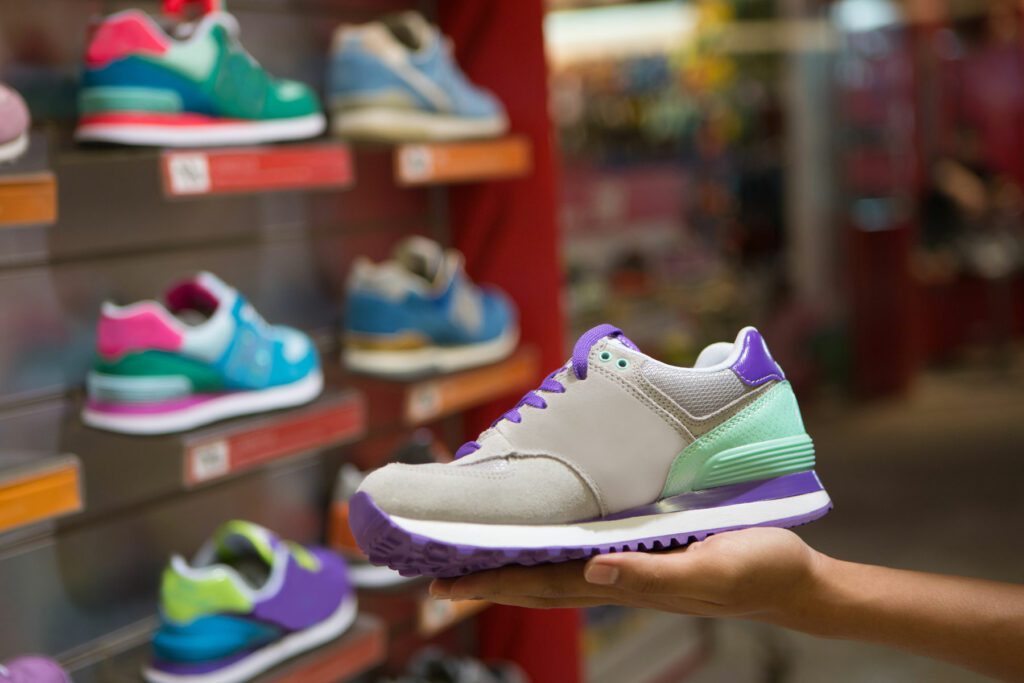Authors
The Supreme Court’s long awaited decision in Iconix Luxembourg Holdings SARL v Dream Pairs Europe Inc and another has now been delivered.
The key takeaway is that practical, real-world and post-sale consumer perception is relevant to the issues of similarity and confusion between trade marks for the purpose of assessing trade mark infringement. This is a really important decision given the role influencers play in promoting “dupe” products as being just like the real thing.
Background
Iconix owns the sportswear brand UMBRO and has held registered trade marks (the UMBRO Trade Marks) for logos on football boots in the UK since 1987.
Since 2018, Dream Pairs has sold footwear branded with a similar logo (“the DP Sign”) in the UK via platforms like Amazon and eBay.
Iconix initiated legal action against Dream Pairs for infringement of its UMBRO Trade Marks under section 10(2)(b) of the Trade Marks Act 1994, a statutory provision which protects trade marks by preventing third parties from using similar signs in relation to identical or similar goods in circumstances where such use creates a likelihood of confusion among consumers.
The High Court initially dismissed Iconix’s claim, holding that the DP Sign and the UMBRO Trade Marks had only a very low degree of similarity, and that no likelihood of confusion existed. The Court of Appeal overturned the decision and found that there was a moderately high similarity and likelihood of confusion, particularly when factoring in the post-sale context, i.e. when the logo is seen on a boot being worn by a person.
Dream Pairs then appealed to the UK Supreme Court.
Legal issues
The Court examined several key questions in reaching a decision:
-
How is similarity between marks assessed?
This has always been a “multi-factorial” assessment which recognises, among other things, that in a real world setting consumers rarely see the two brands side by side allowing for a direct comparison. Therefore, similarity is assessed on the basis of the “average consumer’s” imperfect recollection.
Dream Pairs submitted that only intrinsic, direct comparisons of the marks should inform the similarity assessment, with post-sale conditions relevant only to the test for “likelihood of confusion“.
-
At what point is confusion is assessed?
There is a large body of case law which makes clear that for confusion to be actionable, it has to be present at the point of sale. This means that “initial interest confusion” is not actionable because by the time the shopper makes the purchase, they have realised that they were not buying the real thing.
In light of the Arsenal v Reed case footballing merchandise case, there has been a growing body of case law finding that post-sale confusion (i.e., confusion occurring after the point of purchase and when the product is seen being worn) can amount to trade mark infringement.
-
Legal framework governing trade mark law
The Court also revisited the principles established by the Trade Marks Act 1994, the relevant EU Directives (which have bene transposed into UK law), and guidance from the Court of Justice of the European Union.
Outcome
The Court unanimously allowed Dream Pairs’ appeal, overturning the Court of Appeal’s decision and restoring the trial judge’s original findings such that Dream Pairs was found not to infringe Umbro’s trade marks.
However, the Court rejected Dream Pairs’ argument that post-sale evidence cannot be considered when assessing similarity. It clarified that that realistic and representative post-sale circumstances can and should be considered to establish whether the signs are similar, as this reflects the real‑world way consumers perceive marks on products in use.
The Court also dismissed the argument that only confusion at the point of sale or in a transactional context can amount to infringement. Post-sale confusion that affects the trade mark’s essential functions, including as a guarantee of origin, can also be actionable.
The UK Supreme Court also reflected on the approach taken by the Court of Appeal, noting that the question of infringement is a multifactorial evaluative decision involving facts, law, and judgment. It found that the trial judge in this case had taken a careful and reasoned assessment of the issues of similarity and confusion. Therefore, the trial judge was not wrong to find in favour of Dream Pairs even though the Court of Appeal disagreed. The Supreme Court went on to caution appellate courts against overturning trial judge’s assessments, except in circumstances where it has identified a legal or logical flaw in the trial judge’s judgment.
Comment
This judgment provides some much needed clarification on UK trade mark infringement, particularly around how the courts assess similarity and confusion.
The decision confirms that the realistic context in which a trade mark is viewed, such as on footwear being worn and seen from a range of angles, must be considered when determining similarity and likelihood of confusion. This rejects the approach of taking a strict, isolated side-by-side comparison of marks, and instead aligns with a practical understanding of consumer perception.
With so many products being promoted on social media with influencers commenting on the latest fashions, evidence of how consumers perceive branded products can prove decisive on the question of infringement.
It may also lead to a marked change in the way that businesses develop their branding, to include checks that include visual comparisons from a range of perspectives in the real world.
The court’s approach will be welcomed by brand owners as it will make gathering evidence easier particularly for businesses operating in the fashion or sportswear industries.
The judgment is available to review in-full on the UK Supeme Court’s website.
If you have any questions concerning this decision, please contact Alex Ricketts, Charlotte Bolton or Iain Connor in our Intellectual Property team.
This article is for general information only and does not, and is not intended to, amount to legal advice and should not be relied upon as such. If you have any questions relating to your particular circumstances, you should seek independent legal advice.
Print article



